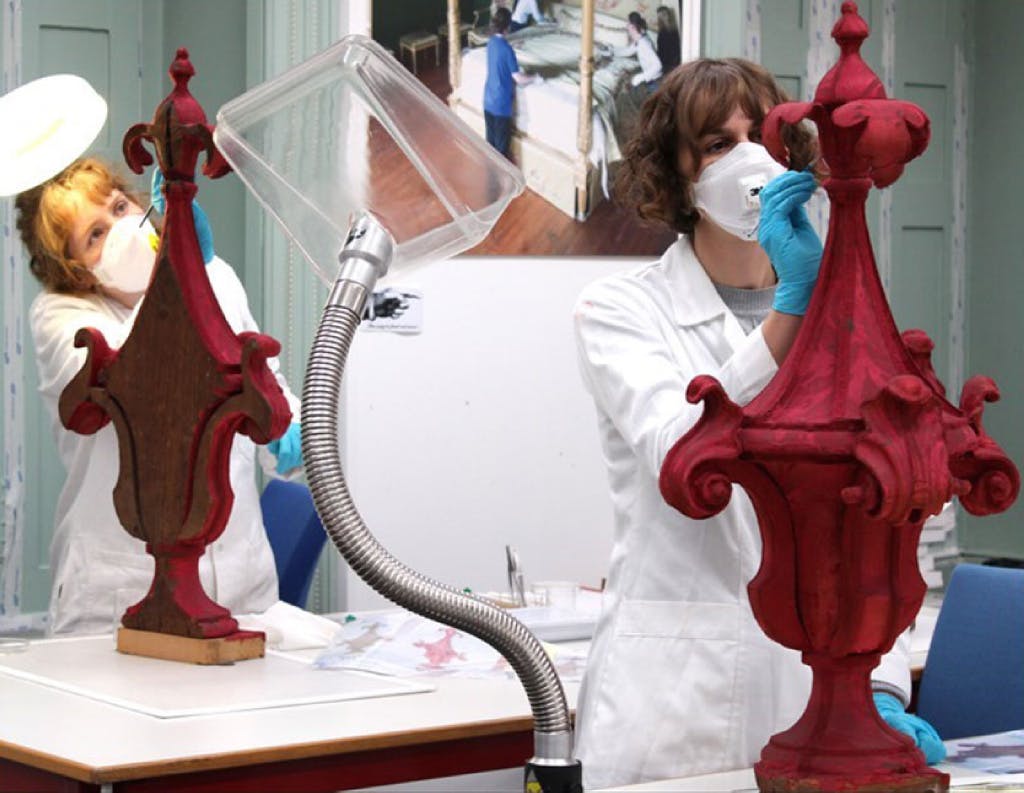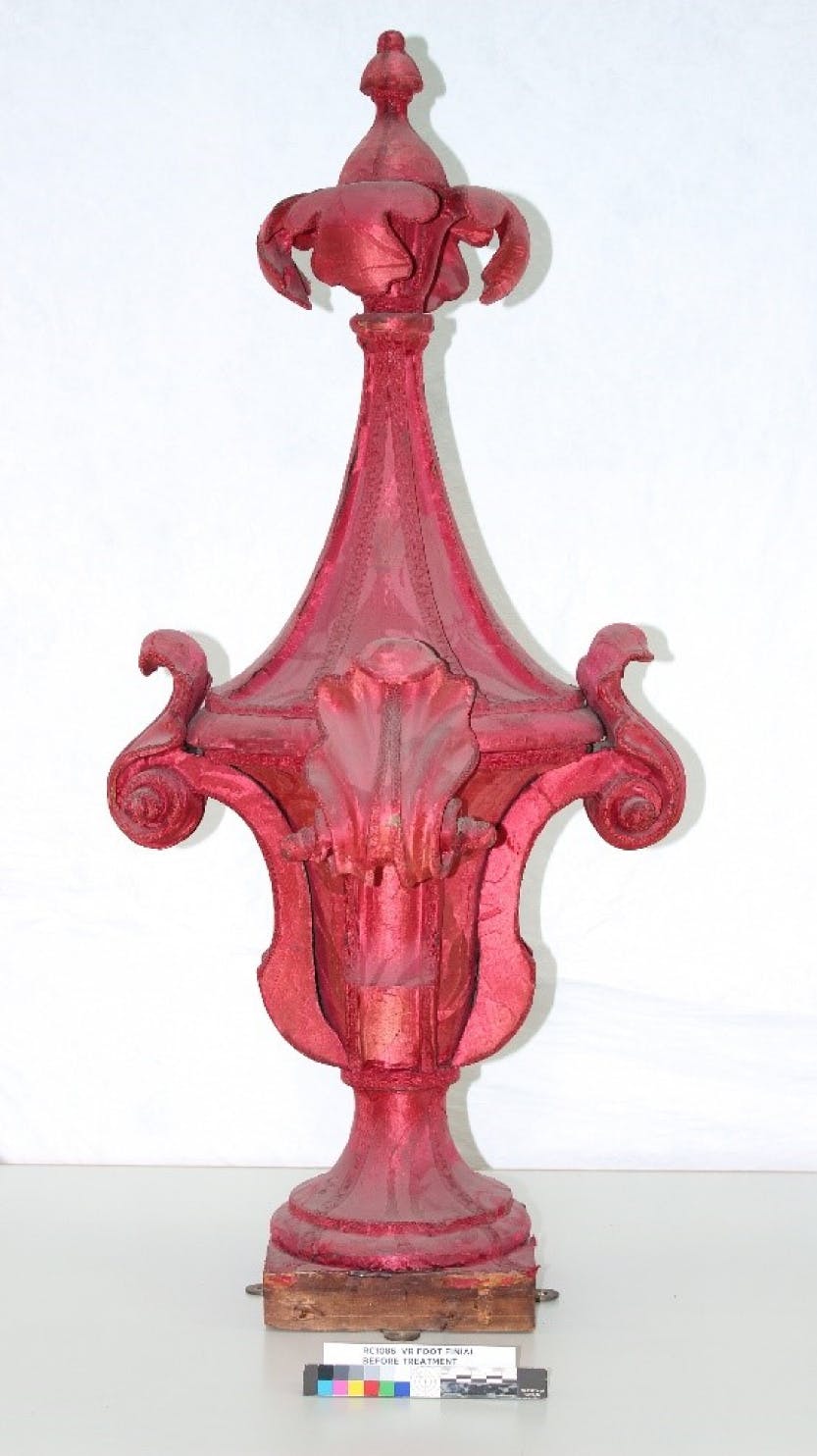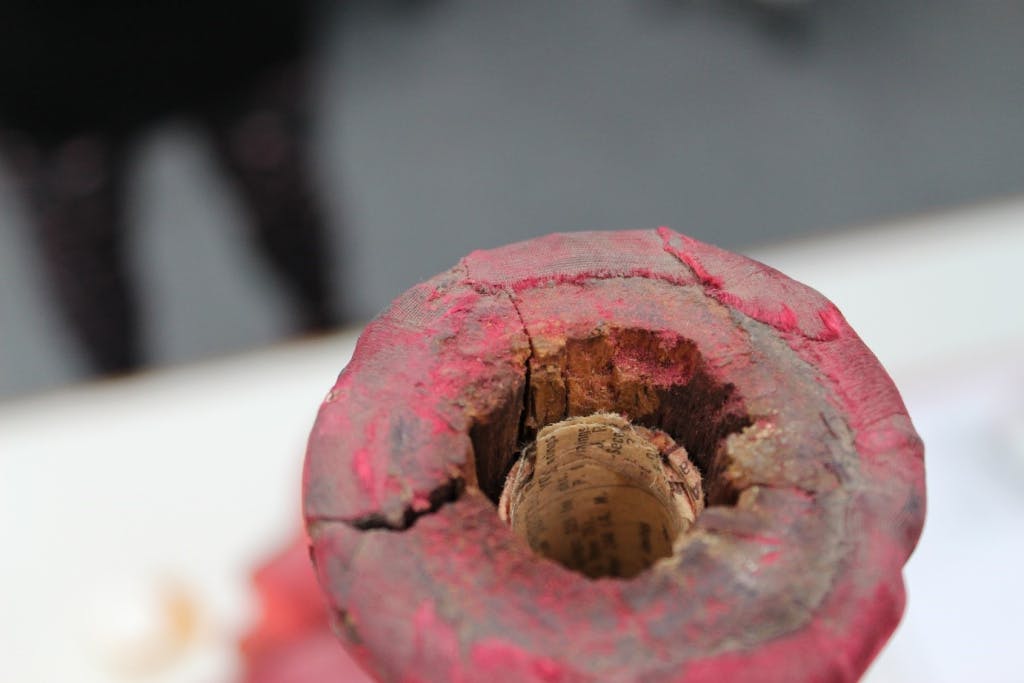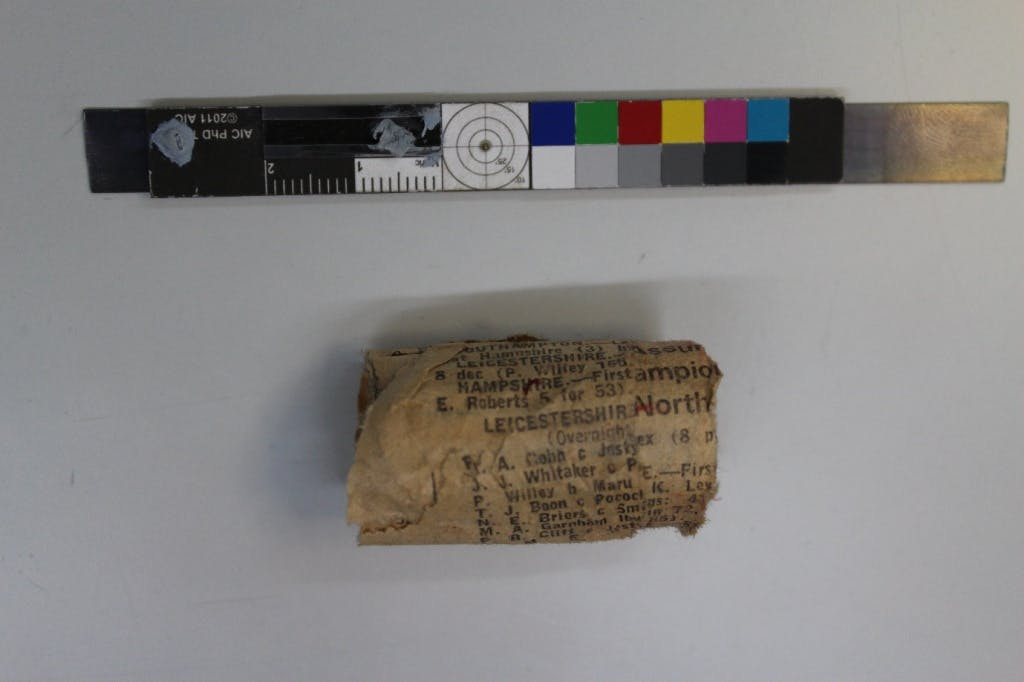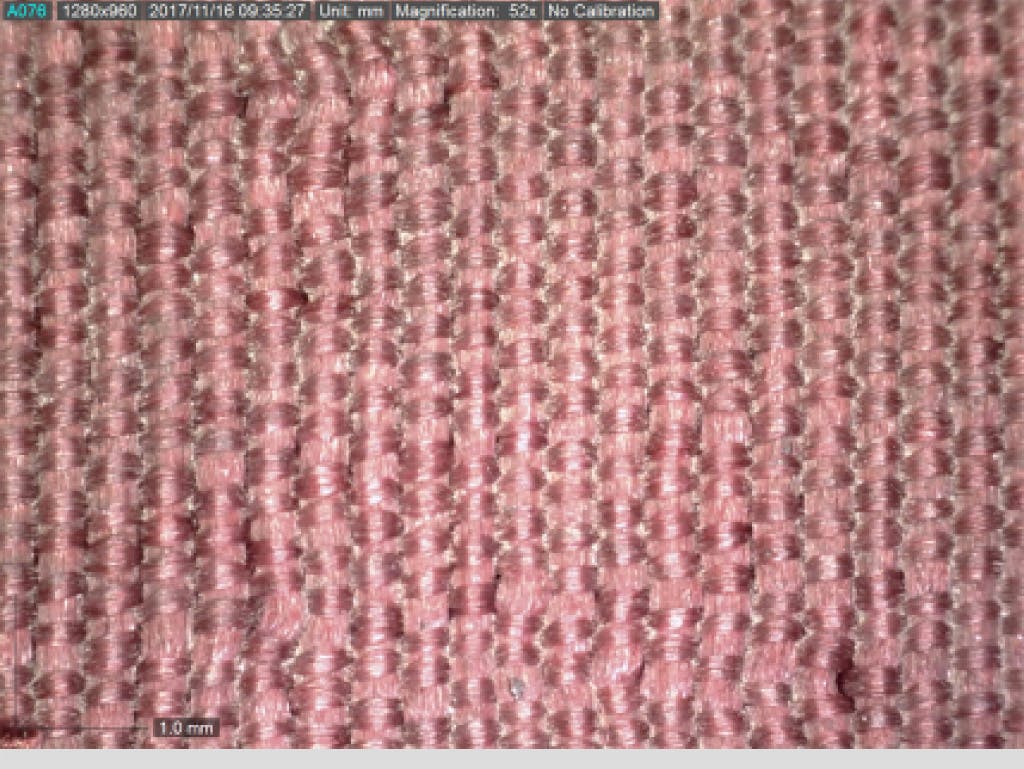Up close with the finials: Secrets of a State Bed
Date: 13 September 2019
Author:
Rosie Chamberlin
Out of the 41 textile components of the state bed, the first to be conserved were the finials. Rosie Chamberlin and Charlotte Gamper, two of our textile conservation team, worked together to conserve the four urn-shaped ornamental features that sit at the corners of the bed tester.
This was a unique opportunity to get up close to parts of the bed that are impossible to access without a scaffold. Being the first element of the bed to receive conservation meant that this privilege also came with the responsibility of informing the conservation treatment of the rest of the bed.
De-installation and discovery
After removal from the bed, they were taken to our conservation studio for an initial examination, to gain a deeper understanding of their construction and history and to inform their conservation treatment.
The finials are composite objects, made of carved wood covered in crimson silk damask with silk braid edging.
On inspection, the top of one of the finials was detached and, when removed, revealed a small cavity. Tucked into the space, a small piece of rolled-up newspaper had been stowed.
The rolled paper was documented and returned to the object as, although it didn't appear to serve a function, it forms an interesting part of the object's history and was not seen to be causing any harm.
Image: Removal of the finials from the bed

Conservation and cleaning
The finials were very dusty; some fibres were lifting and areas of silk and braid were becoming detached. Conservation treatments such as cleaning, consolidation and adhesive support were therefore carried out to increase their longevity. Dust often contains acidic components that contribute towards the chemical degradation of historic textiles, therefore it was necessary to remove any dust. This was done by using a low-powered specialist museum vacuum cleaner and a soft brush. Small synthetic sponges were then used to remove the more ingrained and harder-to-access dust. Analysis after treatment showed the cleaning to have been successful. A scientific device called a colorimeter, that measures colour, showed redder and darker readings than before, suggesting the removal of light grey dust. With the dust removed the object can be viewed as intended in bright crimson damask.
Consolidation and adhesive support
The loose and fraying damask fibres and braid were secured using a conservation-grade adhesive that would not alter their appearance. A thin layer of the chosen adhesive was applied to small areas using a fine brush. Areas of braid and textile, which were detaching from the finials, were re-secured by inserting adhesive support patches. Silk crepeline, a fine and transparent fabric, was coated in the conservation grade adhesive, which was left to dry before being cut to shape and inserted under small areas of lifting textile and braid. The adhesive was then reactivated using a heated spatula; adhering the lifting sections of the textile back in place. The treatment successfully stabilised the weak areas preventing future loss, thereby increasing the longevity of the textile elements of the finials.
Image: Reactivating an adhesive coated crepeline patch

Documentation
Both the discovery of the newspaper and the conservation treatments carried out were thoroughly documented through both written and photographic records and diagrams.
This body of knowledge will be preserved and used in the future to assess how our conservation treatments are holding up against agents such as dust and light and inform the future treatment of these significant artefacts.
Image: Documentation of the treatment carried out
Rosie Chamberlin
Textile Conservator

More from our blog

A discovery on the lining: Secrets of A State Bed
08 January 2020
Queen Caroline's state bed has three upper inner valances. These decorative drapes are attached to the inside the wooden bed frame, to hide the bed frame and give a decorative border to the tester or canopy. They are made from silk damask decorated with silk braid and lined with plain silk. Linings are not usually the most exciting or important part of a textile, but these ones turned out to be far more interesting than we thought.

Conservation of an 18th century headboard: Secrets of a State Bed
13 March 2020
As part of our Secrets of a State Bed series, Conservator Viola Nicastro explains the process of conserving the headboard of Queen Caroline's State Bed, and reveals more of its secrets.

Six mattresses for a Queen: Secrets of a State Bed
30 January 2020
As conservation work continues on Queen Caroline's State bed, Conservator Beatrice Farmer shares discoveries on the lavish silk-covered mattresses, including one that appears to be an impostor. The bed is part of the Royal Collection, and can usually be found on display at Hampton Court Palace.

